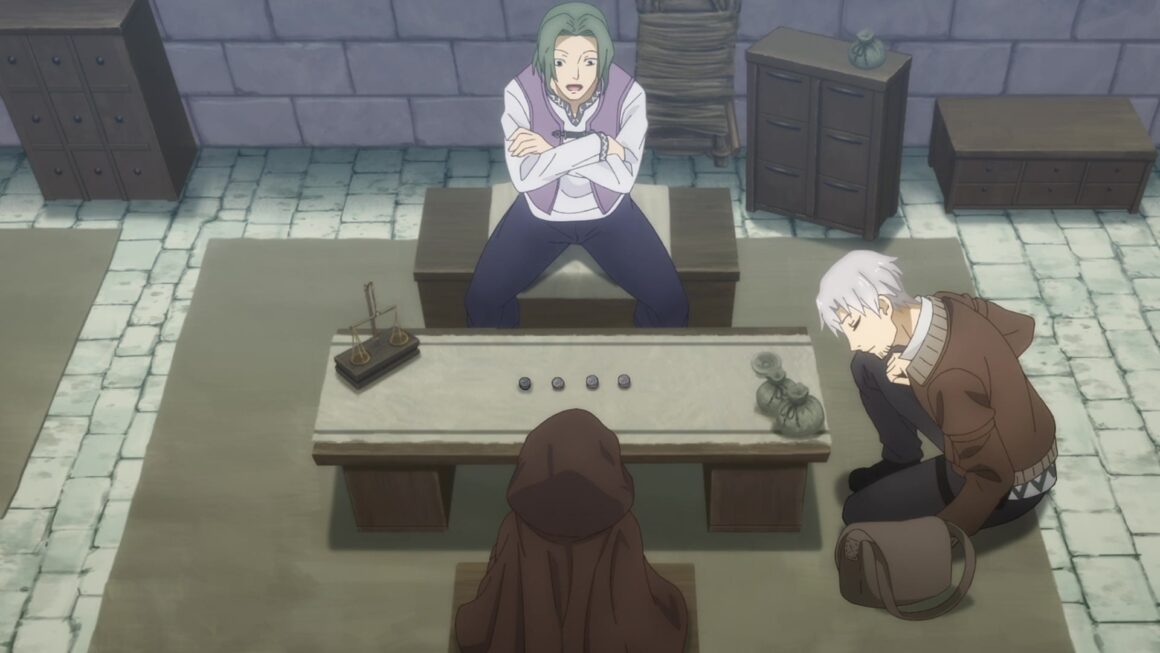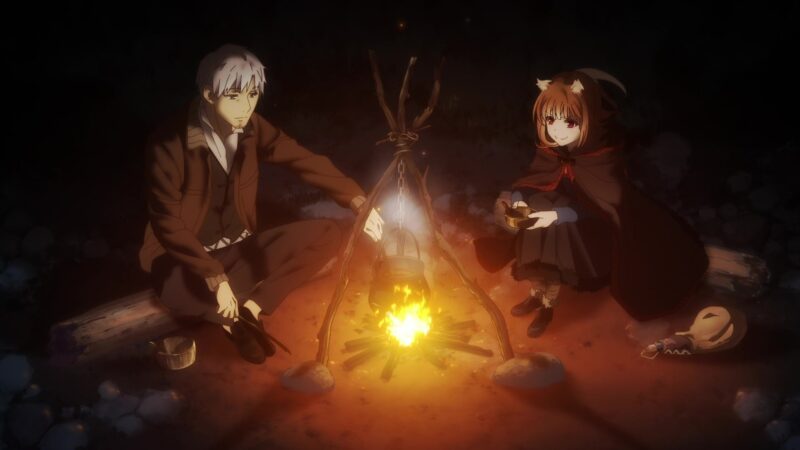There’s a popular saying among anime fans that you can learn more about economics from Spice and Wolf than from an actual economics class. While this is an exaggeration, the recent remake of the series proves there’s some truth to it. One of the early story arcs features a complex currency manipulation scheme that might be confusing for viewers without a background in economics. If you find yourself puzzled by these events, don’t worry! This article will break down the coin saga in simple terms, making it easier to understand the economic principles at play.

The Set Up
Our saga begins in the city of Pazzio, where Lawrence, a traveling merchant, and his companion Holo encounter a novice merchant named Zheren. Zheren shares what seems to be valuable information:
- The Trenni kingdom plans to issue new silver coins.
- The new coins will supposedly contain a higher percentage of silver than the current ones.
- Zheren suggests that Lawrence could profit by buying the new coins and selling the old ones.
The proposed deal:
- Lawrence would pay Zheren 10 Trenni silver coins upfront for this information.
- If profitable, Lawrence would also give Zheren 10% of the earnings.
- If Lawrence loses money, Zheren promises to refund the 10 silver coins.

The Economics Behind the Coin Scheme
In the world of Spice and Wolf, the value of a currency is determined by market trust rather than government decree. The silver content of coins is crucial, and currency speculators closely monitor this percentage. The setting experiences frequent successful rebellions, each often introducing new currencies, which creates a booming currency speculation market ripe with opportunities for profit. National pride also plays a role in this economic system; if a foreign currency dominates a country’s market, it’s seen as a sign of defeat. To counter this, countries have an incentive to increase the silver content of their coins.
Given this economic premise, it’s easy to see why Lawrence was intrigued by Zheren’s proposal about new Trenni silver coins. If new Trenni coins contain more silver, their official value within Trenni will remain unchanged. However, other countries would likely value these new coins highly. This difference in perceived value could create a profit opportunity for crafty merchants like Lawrence. However, it was at this point that Lawrence began to have doubts.
The Plot Twist
To verify Zheren’s claims, Lawrence and Holo visited Weis, Lawrence’s acquaintance in the currency trade. Contrary to Zheren’s information, Weis denied any significant changes in the newer silver coins’ content. However, he could not melt the coins to prove his point conclusively. Instead, Weis laid out the Trenni silver coins in order of their mint dates. This presentation gave Holo an unexpected opportunity. Using her supernatural hearing, she detected subtle differences in the coins’ silver content. To their surprise, Holo’s findings revealed the opposite of what Zheren had told them: the newer coins actually contained less silver.

If they had acted on Zheren’s information and bought the new coins, they would have incurred a huge loss. This is because the Trenni silver coins were destined to be valued less once their reduced silver content became public knowledge. This revelation made Lawrence suspect that other parties might be involved, each with their own agendas in the currency market.
Power Play Behind the Coin Manipulation
As the story unfolds, we learn that the Trenni kingdom is facing economic decline. To address this, the king implements a drastic measure: recalling the kingdom’s silver coins from circulation, melting them down, and minting new coins with a lower silver content. This creates a situation where anyone holding a large quantity of the original, higher-value coins gains considerable leverage over the Trenni kingdom. It’s in this context that the merchant guilds become key players in the unfolding economic and political drama.
The Medio Merchant Company discovered the Trenni’s kingdom’s economic trouble before their competitors. They started spreading rumors to encourage people to sell their old Trenni silver coins, which the company eagerly bought up. Their plan was to use this stockpile of valuable coins as leverage to negotiate more favorable trading terms with the king. However, this clever plan unraveled when Lawrence and Holo encountered Zheren and, through their combined insight, sniffed out their scheme.

The Saga’s Conclusion
Recognizing the scale of capital needed to capitalize on the Trenni kingdom’s situation, Lawrence approached the Milone Trading Company with his insider information. He negotiated a deal to share in the profits from any resulting transactions. Ultimately, the Milone Trading company outwitted their rival, the Medio Trading Company, and successfully negotiated with the king. While there’s an exciting subplot involving Holo’s kidnapping, church interference, and a daring escape, we’ll set that aside for now to maintain our focus on the economic aspects of Spice and Wolf.
After exploring the ins and outs of currency manipulation in Spice and Wolf, you might be wondering if economics can really be this captivating. This anime serves up a delightful blend of medieval economics, political intrigue and a dash of romance, all seasoned with witty banter between a savvy merchant and a wise wolf goddess. So, why not spice up your watch-list? Trust me, it’s more fun than balancing your checkbook.










